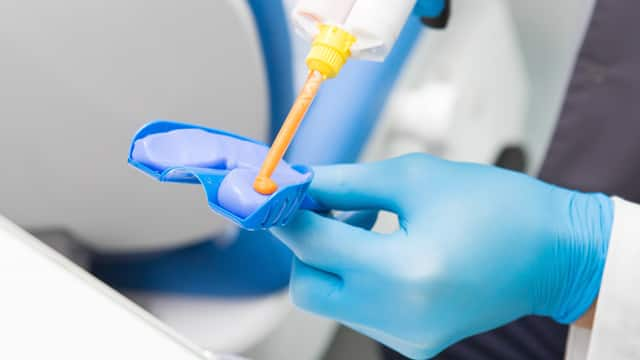You may at first be wondering, do dental impressions hurt? Rest assured, they're done with minimal discomfort and only serve to ensure a perfect result for your dental appliance's fabrication. Let's go over what dental impressions are, why you need one, how they're made, and what to expect from this quick and painless process.
Why Dental Impressions?
From braces and retainers to veneers and mouthguards, dental impressions play an important role in fitting them correctly to your unique smile. One prevalent reason for getting dental impressions is to have a crown or bridge placed in your mouth. If you've ended up with a broken or cracked tooth or even lost a tooth (or a few teeth), a crown or bridge is the ideal solution to making your mouth whole again. No two sets of teeth are exactly alike, so a dental impression is the best way to create a comfortable, personal result.
Making a Good Impression
The dental impression procedure is relatively complication-free. Your dental professional may need to file the top and sides of your affected tooth if you are being fitted for a crown. This will ensure a secure fit. Keep in mind this filing can cause some discomfort, particularly if your tooth needs a filling before accepting a crown (due to a cavity). Even if you've cracked your tooth, it's not too small to support a crown so that the remaining tooth is protected.
At this point, you may be wondering, how long does it take to get dental impressions? Not long at all! Once your tooth is ready, your dental professional uses a dense and sticky alginate material to create your impression. The material your dental professional uses to fabricate your impression can be either rigid or elastic. Alginate is elastic, and once in your mouth, it hardens quickly. It's then removed from your mouth within just a few minutes! After the alginate has been out of your mouth for half an hour, it becomes the ideal shape into which your dental appliance's final material can be poured. Your impressions should be quick and painless, as your dental professional is merely placing this impression material over your tooth or teeth and then removing it.
Beyond this traditional approach to dental impressions, digital impressions are on the rise. As noted in the International Journal of Environmental Research and Public Health, there have been positive outcomes in the use of digital impressions. This study looked at the results of digital impressions for dental patients who had periodontally compromised dentitions with tooth migration and malocclusion issues. The traditional impression proved to capture fewer interdental areas than the digital impression options in periodontally compromised dentitions.
Minor Discomfort
The only two issues you may find uncomfortable while getting a dental impression are the taste of the alginate material and the potential triggering of your gag reflex. The impression material does not have flavor added, so its natural flavor only lasts while the impression is in your mouth. Feel free to ask your dental professional for a sip of water or a swish of an antibacterial mouthwash once it's out.
If you're concerned about your gag reflex, you're not alone! Many people are nervous about getting a dental impression because of the expectation of a foreign material having to sit at the back of their mouth for a few minutes. But did you know there are things you can do to mitigate the chances of triggering your gag reflex? Try breathing through your nose or asking your dental professional if you can sit up during the procedure (reclining can put your throat in an awkward position). These are a few practices that can help you feel more comfortable in the quick time it takes to have your impression completed.
Note that your dental professional may deem it necessary to place a temporary crown, bridge, or dentures once your impression is ready. This is because there may be some lag time of a few weeks while your permanent appliance is completed by a dental laboratory and sent to your dental office. But this will all depend on the reason why you're getting your dental impression in the first place!
We think you'll find your dental impression experience to be pretty fast and effortless. The purpose of dental impressions is to create an exact mold of your tooth or teeth for restorations, orthodontic appliances, or prosthodontic treatment. So even if the process of getting your dental impression may seem a bit uncomfortable or is something you're not looking forward to, the end goal of a healthy, pain-free smile is worth it!
This article is intended to promote understanding of and knowledge about general oral health topics. It is not intended to be a substitute for professional advice, diagnosis or treatment. Always seek the advice of your dentist or other qualified healthcare provider with any questions you may have regarding a medical condition or treatment.
ORAL HEALTH QUIZ
What's behind your smile?
Take our Oral Health assessment to get the most from your oral care routine
ORAL HEALTH QUIZ
What's behind your smile?
Take our Oral Health assessment to get the most from your oral care routine















